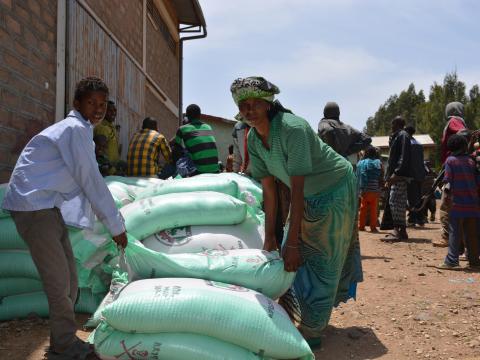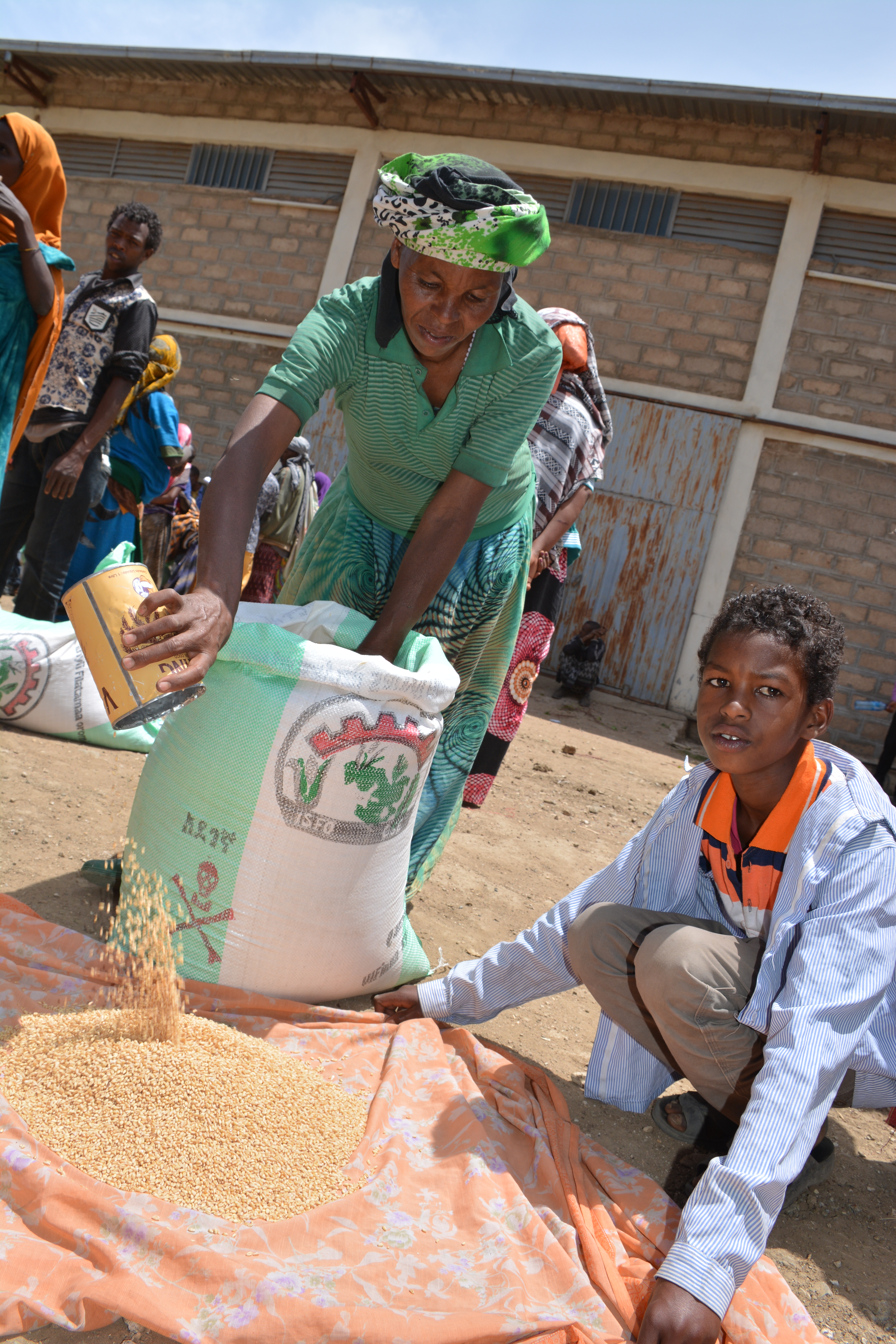Ethiopia recovering from El Nino Food Crisis

Ethiopia has been experiencing one of the worst ever drought in the past 50 years due to the El Nino effect since September 2015. 10.2 million People are in need of emergency food aid. WV Ethiopia has been supporting over 1.7 million through WASH, food aid, integrated nutrition, and food security and livelihood programs.
Jarso district of the East Haraghe zone in Oromia region is among those areas severely affected by the drought. 86% of the annual crop failed leaving 78,000 people to rely on emergency food aid, according to Zimbabwe Gebre Deputy Head of Agriculture Office of Jarso District. At the onset of the crisis WV Ethiopia provided more than 80 tons of different short cycle crop seed varieties in an attempt to supplement the failed crop, which too failed.
WV Ethiopia’s emergency food security and livelihood program is one of the key intervention areas that help drought affected people recover from the El Nino food crisis. Over 362,000 people have been benefitting through food security and livelihood program.
Despite the timely coming and good distribution of the rain, the food shortage is expected to continue until the next harvest season (September to October 2016). However, many of the people are hopeful that the good time will come again in few months. Farmers are busy preparing their farmland, sowing, and planting different crops expecting good yield.
Fatuma Sheka, 40 and a mother of 8 children is among the beneficiaries of WV’s seed distribution scheme. Last year, though, she planted 200 kg of wheat but got nothing. This affected Fatuma’s family in many ways. “One of my children, Tajir Ibrahim dropped his education from grade 11 as I couldn’t provide food and educational material. Still, I have nothing to eat except the government’s support until the next harvest season,” she said.
But this year Fatuma is hopeful that things will get better shortly. Fatuma’s husband and some of her children were preparing the land while she and one of her children were at WV’s seed distribution center to receive seed to sow on the land being prepared.
“The rain is good. I am hopeful and expect good harvest next year. I believe we will have good harvest. I will send my child back to school,” she added.
Challa Ibrahim, 12 and a grade 5 student is one of Fatuma’s children. Challa supports his parents in the farming and house works. He is good at Math and aspires to be a doctor. The feeling of the drought is fresh in his memory, but he is hopeful to improve his academic performance. “There was a big challenge; hunger was hovering over us as a ghost. Most often I went to school without having my meal. It was very tough time. Now I am happy because there is good rain. Last year I stood 11th but next year I am planning to stand 1st because there won’t be a challenge as last year,” Challa explained.
Many families separated and others migrated to neighboring districts to overcome the threat posed by the drought. School children were forced to leave their education. “The year was the toughest to me, my children, and the whole family. We had nothing to eat. One of my children, Abdujelil Abrahim dropped his education from grade 8, and the other, Shukri, also dropped her education and got married to a man because I couldn’t provide them food and educational material,” said another woman Kimia Usman, 40 and a mother of four.
“All of my cattle died and I was so sad and desperate. My husband and I went to neighboring districts in search of daily labor to feed our children,” she added. But this year, Kimia continued with courage and confidence, “I hope we will have a good harvest and I hope life will be restored back to normal in few months.”
“I remember and feel the hardship. I went to school many times without food,” explained Kimia’s son Obsa Abrahim 12 and a grade 5 student. But now he plans to work hard to reverse the situation. “I will weed and do all my best to have good harvest this year, I wish I support my family,” he added.
WV Ethiopia’s emergency food security and livelihood program continued its effort in restoring the livelihood of the drought affected people across the country.
Over 190 tons of different seed varieties were distributed to Jarso district farmers. The seed will cover 1000 hectares of land and benefit 7000 drought affected households.
